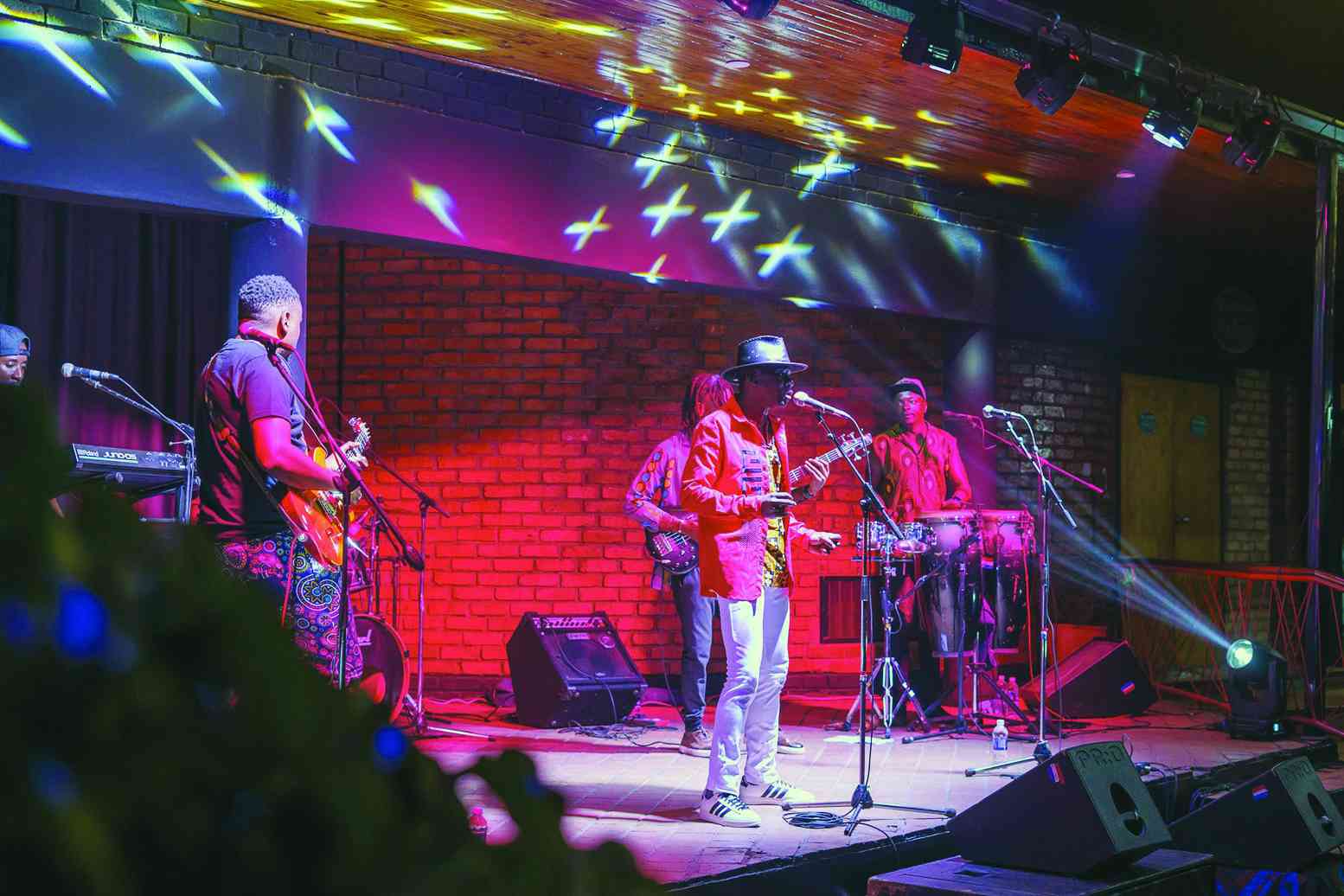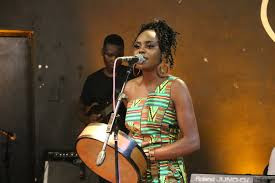
Roy Guthrie, who passed away on March 5 of this year, will be remembered not only as a significant figure in Zimbabwean stone sculpting, or as the founder and director of Chapungu Sculpture Park but also as a passionate tree planter.
He had a dream of planting a thousand trees along the highway connecting Harare and Bulawayo. As a seed collector, Guthrie was aware of the medicinal values and healing properties of indigenous trees and what they represented in the Shona culture.
Along with encouraging and mentoring artists, he also taught them the value of planting trees in their homes and workspaces.
In an interview with IndependentXtra, several of the resident artists at the sculpture park, including Nicholas Kadzungura, Cosmas Kamhiriri Muchenje, Leo Berekai, Lloyd Mwarowa, and Cephas Mukundi, shared similar views regarding Guthries' love of trees and his delight at witnessing plant and animal life flourishing within the park.
Kadzungura recalls his first encounter with Guthrie when he assigned him a task to collect seeds. "He asked me to collect seeds from a tree within the premises which I did and delivered at his office in no time. He was impressed at how I did not take long."
Roy Guthrie (pictured), who passed away on March 5 of this year, will be remembered not only as a significant figure in Zimbabwean stone sculpting, or as the founder and director of Chapungu Sculpture Park but also as a passionate tree planter.
He had a dream of planting a thousand trees along the highway connecting Harare and Bulawayo. As a seed collector, Guthrie was aware of the medicinal values and healing properties of indigenous trees and what they represented in the Shona culture.
Along with encouraging and mentoring artists, he also taught them the value of planting trees in their homes and workspaces.
- Gweje relishes fashion achievements
- Daily life struggles reflected in Burning Figure
- 'Film sector drives economic growth'
- My Beautiful Home contest over subscribed
Keep Reading
In an interview with IndependentXtra, several of the resident artists at the sculpture park, including Nicholas Kadzungura, Cosmas Kamhiriri Muchenje, Leo Berekai, Lloyd Mwarowa, and Cephas Mukundi, shared similar views regarding Guthries' love of trees and his delight at witnessing plant and animal life flourishing within the park.
Kadzungura recalls his first encounter with Guthrie when he assigned him a task to collect seeds. "He asked me to collect seeds from a tree within the premises which I did and delivered at his office in no time. He was impressed at how I did not take long."
The artist, who works with harder stones has participated in most of the Chapungu Sculpture Park Botanic Garden exhibitions held in Europe and the United States.
Guthrie was phenomenal in the way he promoted Shona sculpture around the world in Europe, America, South Africa and Australia. He promoted the first, second and third generation of artists and a large number of them are successful in their respective art forms.
In the 1980s, Verdite stone (Bud Stone or African Jade) mined in Concession, north of Harare, was regarded as the best stone and was even used to make jewellery. To enhance the quality of Zimbabwean stone sculpture, Guthrie helped artists collect the semi-precious stone from the quarry. He was also instrumental in assisting them to identify high-quality stones that would not crack and had a solid base, allowing their pieces to stand solidly once placed on platforms.
Moving to Chapungu Sculpture Park from Bridge House, which was an artist's space situated in Harare's Kopje area where artists would gather and work on their pieces allowed Guthrie to expand his vision to include larger sculptures.
He purchased raw stones for artists and they paid or had percentages deducted when the artwork was completed.
This greatly inspired a lot of second-generation artists. “Roy did a lot of work to encourage our generation of artists who came soon after the first generation. It became visible that stone art would have a bright future. Our first exhibitions became popular and people started coming to Zimbabwe to buy our sculptures,” said Muchenje who began working with Guthrie between 1982 and 1983.
He also urged them to draw inspiration from Shona mythology and culture.
“He was unique among art promoters as he had a deep understanding of Shona sculpting and could guide artists in their artistic processes. Whenever I discussed it with him he would give me tips on how to improve my pieces. He would talk about art to such an extent that I would be left feeling uplifted," Berekai remarked.
To showcase the accomplishments of the Zimbabwe stone sculpture movement, Guthrie planned to establish a museum within Chapungu Sculpture Park. The museum would feature enormous sculptures that reached heights of ten metres and would attract visitors from outside the country. Additionally, he wanted artworks that demonstrated and represented the unity and collaborative efforts of artists. He also wanted the big pieces to be displayed in public spaces and buildings around Zimbabwe.
The executive director of the National Gallery of Zimbabwe (NGZ), Raphael Chikukwa, stated that Guthrie's contributions were enormous and beyond life in numerous aspects.
“The National Gallery of Zimbabwe is proud of Roy Guthrie's contributions through catalogues that Chapungu Sculpture Park published and these catalogues remain a testimony of his work. Chapungu Sculpture Park is not just a sculpture park but a cultural hub that continues to attract sculpture lovers and buyers from across the world. His footprints will be with us forever and may his soul rest in power for his contribution to Zimbabwean art is huge.”
The world's biggest collection of stone sculptures from Zimbabwe is housed in the sculpture park. Not only are there over a thousand pieces of art on exhibit at the Msasa property, but there are many pieces at Chapungu Sculpture Park in Colorado, USA, and in several gardens throughout Europe, particularly Germany. Chapungu helped launch the careers of many prominent artists.
Among them Dominic Benhura, Tapfuma Gutsa, Henry Munyaradzi, and Nicholas Mukomberanwa.
Guthrie was phenomenal in the way he promoted Shona sculpture around the world in Europe, America, South Africa and Australia. He promoted the first, second and third generation of artists and a large number of them are successful in their respective art forms.
In the 1980s, Verdite stone (Bud Stone or African Jade) mined in Concession, north of Harare, was regarded as the best stone and was even used to make jewellery. To enhance the quality of Zimbabwean stone sculpture, Guthrie helped artists collect the semi-precious stone from the quarry. He was also instrumental in assisting them to identify high-quality stones that would not crack and had a solid base, allowing their pieces to stand solidly once placed on platforms.
Moving to Chapungu Sculpture Park from Bridge House, which was an artist's space situated in Harare's Kopje area where artists would gather and work on their pieces allowed Guthrie to expand his vision to include larger sculptures.
He purchased raw stones for artists and they paid or had percentages deducted when the artwork was completed.
This greatly inspired a lot of second-generation artists. “Roy did a lot of work to encourage our generation of artists who came soon after the first generation. It became visible that stone art would have a bright future. Our first exhibitions became popular and people started coming to Zimbabwe to buy our sculptures,” said Muchenje who began working with Guthrie between 1982 and 1983.
He also urged them to draw inspiration from Shona mythology and culture.
“He was unique among art promoters as he had a deep understanding of Shona sculpting and could guide artists in their artistic processes. Whenever I discussed it with him he would give me tips on how to improve my pieces. He would talk about art to such an extent that I would be left feeling uplifted," Berekai remarked.
To showcase the accomplishments of the Zimbabwe stone sculpture movement, Guthrie planned to establish a museum within Chapungu Sculpture Park. The museum would feature enormous sculptures that reached heights of ten metres and would attract visitors from outside the country. Additionally, he wanted artworks that demonstrated and represented the unity and collaborative efforts of artists. He also wanted the big pieces to be displayed in public spaces and buildings around Zimbabwe.
The executive director of the National Gallery of Zimbabwe (NGZ), Raphael Chikukwa, stated that Guthrie's contributions were enormous and beyond life in numerous aspects.
“The National Gallery of Zimbabwe is proud of Roy Guthrie's contributions through catalogues that Chapungu Sculpture Park published and these catalogues remain a testimony of his work. Chapungu Sculpture Park is not just a sculpture park but a cultural hub that continues to attract sculpture lovers and buyers from across the world. His footprints will be with us forever and may his soul rest in power for his contribution to Zimbabwean art is huge.”
The world's biggest collection of stone sculptures from Zimbabwe is housed in the sculpture park. Not only are there over a thousand pieces of art on exhibit at the Msasa property, but there are many pieces at Chapungu Sculpture Park in Colorado, USA, and in several gardens throughout Europe, particularly Germany. Chapungu helped launch the careers of many prominent artists.
Among them Dominic Benhura, Tapfuma Gutsa, Henry Munyaradzi, and Nicholas Mukomberanwa.









